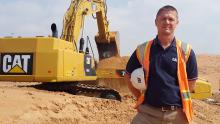Iran plans to raise its annual cement production to 120 million tons in eight years as per the country’s 20-Year Vision Plan (2005-25).
According to the Ministry of Industries, Mining and Trade, the targets set in the vision plan will make Iran the third biggest cement producer in the world by the deadline, the ministry’s official news service Shata reported, according to Iran's Financial Tribune.
The strategic document also sees Iran as the number one exporter of cement globally and the biggest producer in the region by 2015.
Iran will be able to cash in on exports, as the global cement per capita consumption is expected to see a 4.9% increase by 2018 i.e. from 539 kg to 640 kg, ILNA reported.
Iran was the world’s seventh largest cement producer in 2016 after it dropped three steps the year before. Production reached 58.6 million tons in 2015, down 12% year-on-year, according to Cement Employers Association.
Last Iranian year’s (ended March 20, 2017) output stood at 57 million tons.
Iranian cement exports are stipulated to rise to 32 million tons by 2025. Latest statistics indicate that the country exported 11.5 million tons of cement during the 11 months to Feb 18.
The average ratio of production to capacity stood at 82% over the past decade.
Cement prices have not changed in the past three years, although production costs have gone up by 20% year-on-year during the period, Bourse Press cited Ebrahim Gholamzadeh, managing director of Lamerd Cement Company, as saying.
Gholamzadeh puts the current base price of cement at 1,100,000 rials ($29.4) per ton, which makes Iranian cement one of the cheapest in the world.
This is while the cement industry has been dealing with low demand and liquidity issues for the past few years due to stagnation in the construction sector. The shrinking market gave rise to what CEA calls unhealthy competition, meaning that producers entered a race to offer the lowest prices by any means possible, even at the expense of sacrificing the quality of their products.
Iran’s cement industry witnessed a staggering growth in output capacity as of the fiscal 2004-5, as the capacity expanded from 32 million tons in that year to 83 million tons last year (March 2016-17), indicating a whopping 156% upsurge.
Before the ongoing slump, Iranian cement producers experienced a seven-year boom owing to the ill-famed Mehr Housing Scheme–a large-scale construction program initiated in 2007 by the previous administration to provide two million low-income people with housing units through free land and cheap credit.
The program buoyed demand for all construction materials and prompted unrestrained capacity-making by the government. Its progress slowed down, however, due to lack of funding, which dragged down domestic demand for construction materials in turn.
Cement manufacturers were forced to turn to exports to make use of the increased production capacities developed during the boom years.
Further exacerbating the situation, in early 2015, the Iraqi government banned the import of Iranian cement citing low quality, which deprived Iranian producers of their most lucrative market.
After extensive talks with Iraqi officials, the ban was lifted but the volume of shipments diminished markedly, as Iranian officials imposed an export quota on the commodity to both monitor cement quality and supply.
More than 15 million tons of cement and clinker were exported in the fiscal 2015-16, with Iraq accounting for close to 65% of the figure.
Exporters have yet to find new markets to replace Iraq. They are currently making inroads into Tanzania, Egypt and Haiti.






